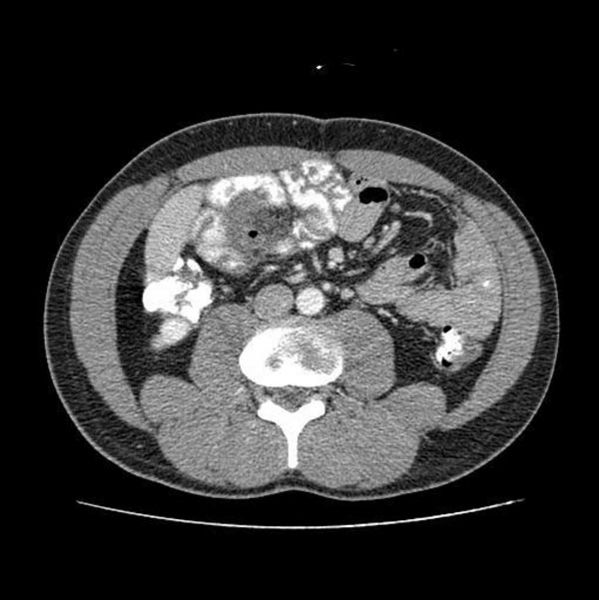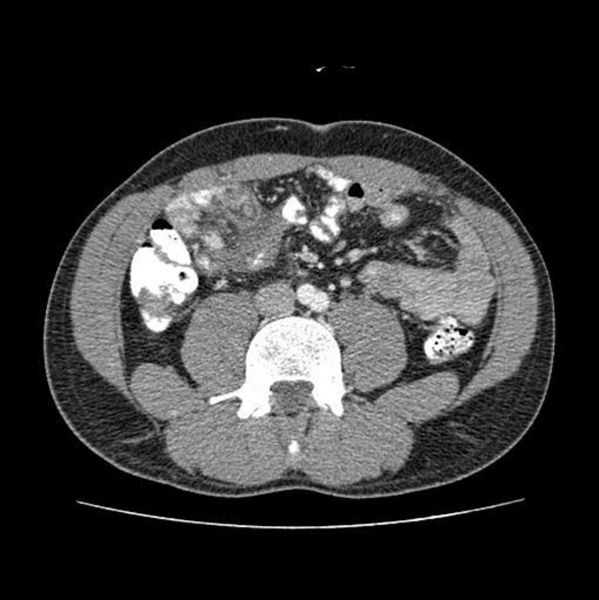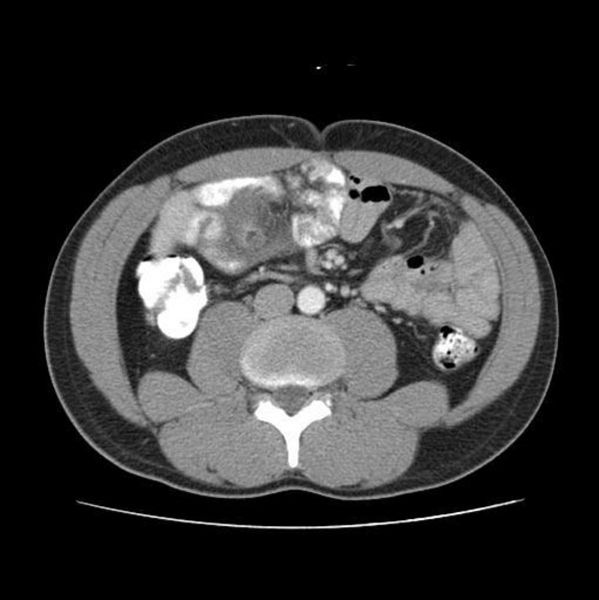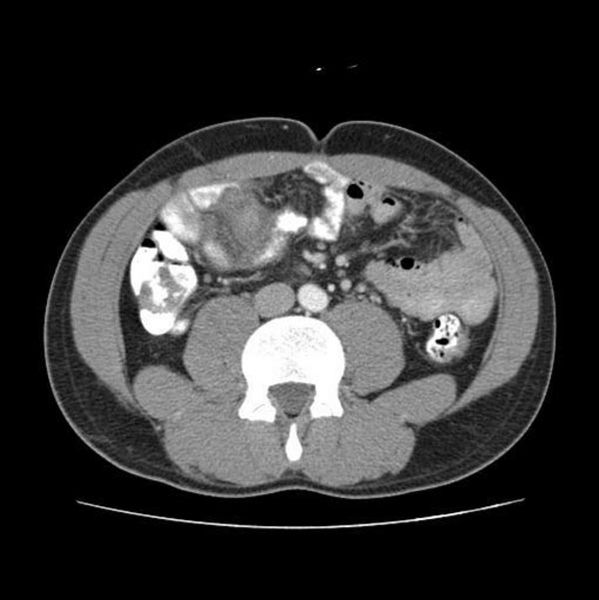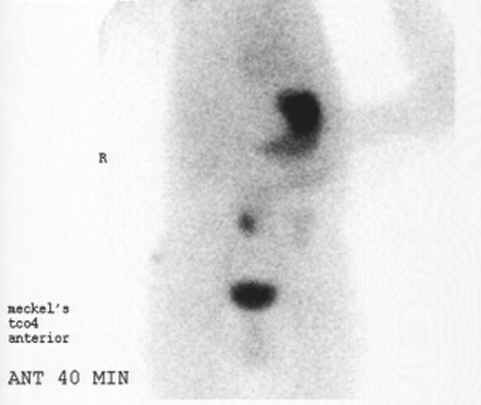Meckel's diverticulum
| Meckel's diverticulum | |
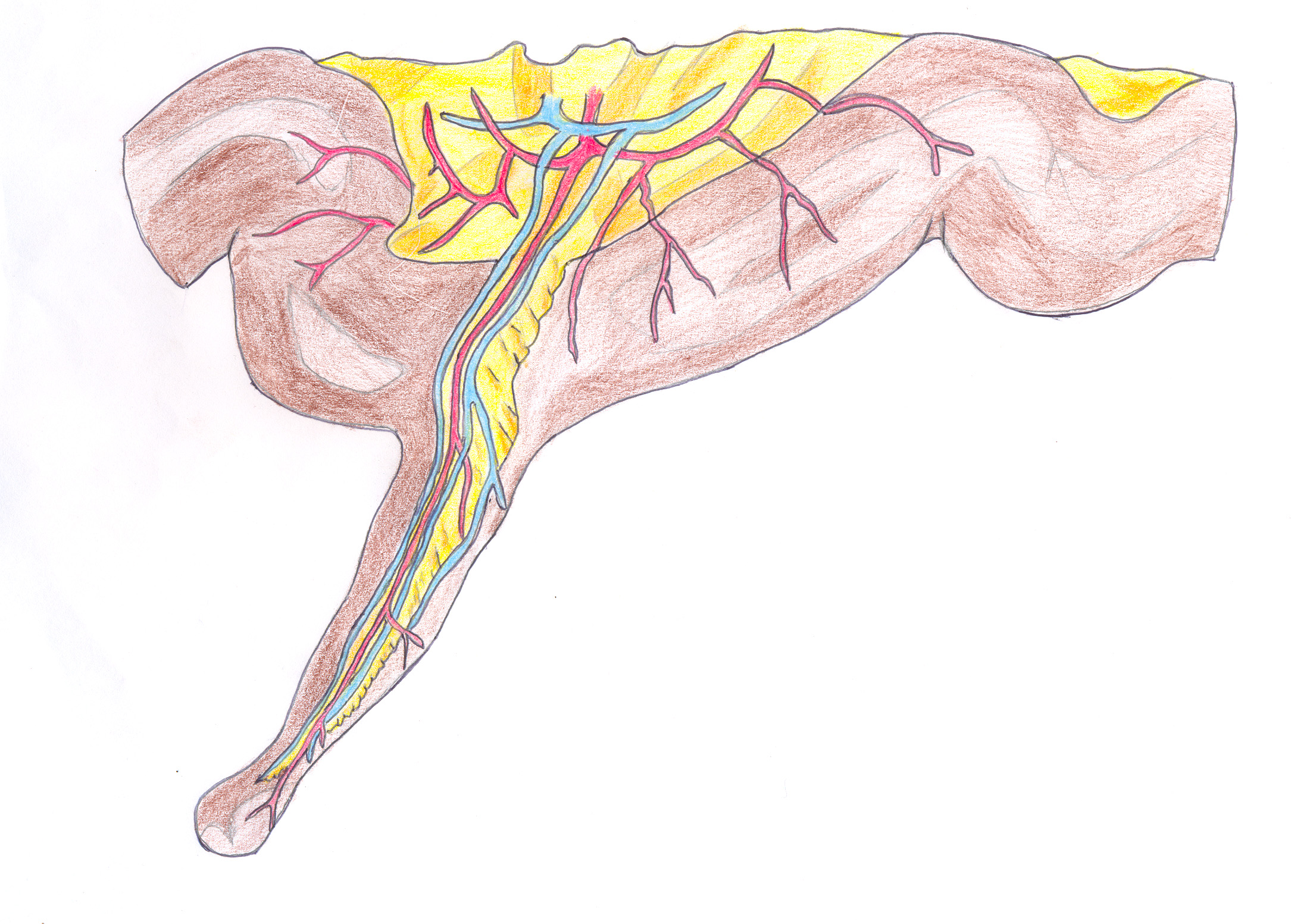 | |
|---|---|
| Meckel's diverticulum | |
| ICD-10 | C17.3, Q43.0 |
| ICD-9 | 152.3, 751.0 |
| OMIM | 155140 |
| DiseasesDB | 7903 |
| MeSH | D008467 |
For patient information click here.
Editor-In-Chief: C. Michael Gibson, M.S., M.D. [1]
Overview
A Meckel's diverticulum, a true congenital diverticulum, is a small bulge in the small intestine present at birth. It is a vestigial remnant of the omphalomesenteric duct (also called the vitelline duct), and is the most frequent malformation of the gastrointestinal tract. It is present in approximately 2% of the population, with males more frequently experiencing symptoms.
It is named after Johann Friedrich Meckel, who first described this type of diverticulum in 1809.[1][2]
Presentation
Meckel's diverticulum is located in the distal ileum, usually within about 60-100 cm of the ileocecal valve. It is typically 3-5 cm long, runs antimesenterically and has its own blood supply. It's left over from the umbilical cord and intestines from our embryonic life.
A memory aid is the rule of 2's: 2% (of the population) - 2 feet (from the ileocecal valve) - 2 inches (in length) - 2% are symptomatic, there are 2 types of common ectopic tissue (gastric and pancreatic), the most common age at clinical presentation is 2, and males are 2 times as likely to be affected.
It can also be present as an indirect hernia, where it is known as a "Hernia of Littre." Furthermore, it can be attached to the umbilical region by the vitelline ligament, with the possibility of vitelline cysts, or even a patent vitelline canal forming a vitelline fistula when the umbilical cord is cut. Torsions of intestine around the intestinal stalk may also occur, leading to obstruction, ischemia, and necrosis.
Natural History, Complications and Prognosis
Meckel diverticulitis'
Meckel diverticulitis is acute inflammation of a Meckel diverticulum.
- CT will demonstrate a blind-ending, tubular, round or oval structure in the right lower quadrant or periumbilical region with surrounding inflammation.
- The wall of the diverticulum may show inflammatory changes such as mural thickening and contrast material enhancement.
- Soft-tissue stranding and adjacent fluid collections are also helpful features of diverticulitis.
- Occasionally an enteroliths will be present within the inflamed diverticulum.
Symptoms
Approximately 98% of people afflicted with Meckel's diverticulum are asymptomatic. If symptoms do occur, they typically appear before the age of two.
The most common presenting symptom is painless rectal bleeding, followed by intestinal obstruction, volvulus and intussusception. Occasionally, Meckel's diverticulitis may present with all the features of acute appendicitis. Also, severe pain in the upper abdomen is experienced by the patient along with bloating of the stomach region. At times, the symptoms are so painful such that they may cause sleepless nights with extreme pain in the abdominal area.
Diagnosis
A technetium-99m (99mTc) pertechnetate scan is the investigation of choice to diagnose Meckel's diverticula. This scan detects gastric mucosa; since approximately 50% of symptomatic Meckel's diverticula have ectopic gastric (stomach) cells contained within them, this is displayed as a spot on the scan distant from the stomach itself. Patients with these misplaced gastric cells may experience peptic ulcers as a consequence. Other tests such as colonoscopy and screenings for bleeding disorders should be performed, and angiography can assist in determining the location and severity of bleeding.
Positive Technetium-99m pertechnetate scan
Imaging Findings
- Meckel diverticulum is identified as a saccular, blind-ending structure located on the antimesenteric border of the ileum.
- Meckel diverticulum is usually found in the right lower quadrant and pelvic region.
- The junction of the diverticulum with the ileum may show a mucosal triangular plateau or triradiate fold pattern (represents the site of omphalomesenteric duct attachment to the ileum).
- Filling defects within the diverticulum may represent enteroliths, fecoliths, or foreign bodies.
- Technetium-99m pertechnetate scintigraphy is the modality of choice for evaluating pediatric patients with gastrointestinal hemorrhage and a suspected Meckel diverticulum.
- A Meckel diverticulum containing gastric mucosa will manifest as a small rounded area of increased activity in the right lower quadrant.
- Normal activity will simultaneously appear in the stomach.
Treatment
Treatment is surgical, consisting of a resection of the affected portion of the bowel.
References
- ↑ Template:WhoNamedIt
- ↑ J. F. Meckel. Über die Divertikel am Darmkanal. Archiv für die Physiologie, Halle, 1809, 9: 421-453.
Template:Congenital malformations and deformations of digestive system
de:Meckel-Divertikel
it:Diverticolo di Meckel
